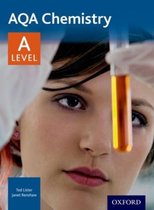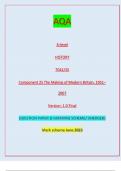Summary
Summary Notes on specification
Provides an overview of the points made on the specification for the AQA Chemistry exam board. Includes all topics (note that chromatography, catalysis, NMR and Period 3 is excluded) with the corresponding detailed notes alongside each point.
[Show more]





